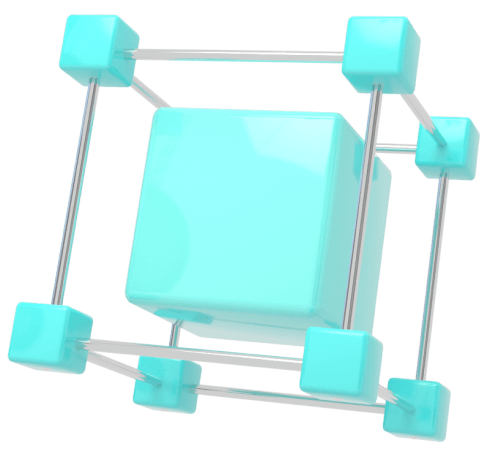Welcome to CEX.IO University
Crypto doesn’t have to be complicated. CEX.IO University is here to provide you with the knowledge and resources needed to realize the money-making potential of blockchain technology and cryptocurrencies.
This primer is here to help readers take those first steps and learn the basics. While we will keep the jargon to a minimum, refer to our glossary page. We recommend using it as a companion piece while visiting CEX.IO University.
For those of you who are ready to learn, read on!

What is crypto?
Crypto is a medium of exchange created by its respective blockchain. It is the value-based reward earned by users who participate in the consensus mechanism defined by the network.
A crypto is essentially digital cash. Since it’s digital and recorded to the blockchain, it can be sent anywhere it’s accepted. Crypto is an intangible representation of value. By nature of its creation it is encrypted and decentralized. This means that unlike fiat currency printed by nation states, there is no top-down authority deciding who gets what.
The supply and demand of a cryptocurrency is determined by the blockchain network it belongs to. How a crypto is made, the fixed supply, and its utility are designed by its founding developers. Once it’s created, the purpose, worth, and ultimately the fate of a cryptocurrency rests with the users of the network. Since the creation of Bitcoin in 2009, many blockchain networks rose and fell into obscurity.
Where it’s accepted as a form of payment, crypto can be used to buy goods and services. Cryptocurrencies have become widely accepted as a new digital asset class, making them closer to stocks or precious metals. Since it’s such a new and unique technology, investing in crypto (like any other asset) should be done after adequate research and due diligence.
Key differences between cash and crypto
Permissionless
Getting paid in crypto means wages cannot be garnished or intercepted by third-party payment providers and agencies. No blacklisting of accounts.
Secure
The cryptographic design of crypto is much safer than cloud-hosted banking and broker accounts. If you have your private keys and use best practices to store your cryptocurrency, it is virtually impossible to hack.
Faster
Compared to traditional money, transacting in crypto is way faster. Sending crypto across the world can be completed in minutes, and at less of a cost than an ACH or wire transfer.
Blockchain basics
In order to dive into the crypto economy, an elementary understanding of how blockchain technology works is necessary.
A blockchain is a distributed ledger of data containing cryptocurrency transactions, NFT ownership, and decentralized finance (DeFi) smart contracts. The blockchain organizes data by blocks, and to update the chain with new blocks of data they must go through a consensus mechanism. The consensus mechanism or algorithm is a protocol that the network decides to use to verify and accept new blocks into the chain.

Once blocks of data are successfully added to the blockchain, they are immutable. The data is transparent, impossible to edit, and timestamped to the ledger, thus securing the blockchain from fraud and other malicious activity.
Blockchain networks like Bitcoin or Ethereum are revolutionary because they are decentralized, trustless, P2P payment systems that can function without a central entity, authority, or figure up top.
What is the impact of blockchain?
So the big picture is: Blockchain technology is a distributed ledger of data recorded by a network of users. Depending on the protocol, users can transact, build apps, or store NFTs without the oversight or management of a central authority. Bitcoin, Ethereum, Doge, Polygon, and Polkadot are all examples of networks operating on the blockchain.
The proof of the blockchain’s transformative power is in the market. In a single decade, this emerging technology and industry has generated billions of dollars of value. One characteristic of blockchain networks worth looking into is the ability for them to function in a decentralized manner.
The Bitcoin blockchain requires a decentralized network of users (aka miners), rather than a small group of administrators, to validate and record transactions. With an international user base, Bitcoin transactions are fast, continuous, secure, and inexpensive.
- Fast: the P2P system allows for transactions to go from point A to point B without being filtered for metadata, ad identifiers, or other intermediaries.
- Continuous: popular blockchain networks have users worldwide, and the shared network operates 24/7.
- Secure: Compared to cloud computing, distributed networks rely on the entire network of nodes. A distributed blockchain is not vulnerable to isolated hacks or crashes.
- Inexpensive: The cost of keeping a blockchain running is shared across the network. Transactions are performed at much lower costs compared to a server in a data center.
What’s a consensus mechanism?
A consensus mechanism is critical for the healthy function and furtherance of a blockchain network. It refers to the protocol that makes sure all devices on the blockchain network are in sync (and on the same page) regarding which transactions are accurate, legitimate, and accepted into the blockchain.
A successful consensus mechanism incentivizes nodes for an honest accounting of transactions and punishes bad actors for inputting false information or trying to harm the network.
There are many types of consensus mechanisms and algorithms. Some of the most popular ones include proof of work, proof of stake, and delegated proof of stake.
Bitcoin’s proof of work consensus
Bitcoin was created by Satoshi Nakamoto in 2009, and with it the proof of work consensus algorithm was born. Auditing the blockchain and accepting new data onto the chain was done via mining. The incentive was the chance to mine a new bitcoin.
Satashi Nakamoto designed the proof of work consensus (bitcoin mining) in order to reward people for verifying transactions with new blocks through computational work.
In its purest form, the work of a coin miner is auditing. The end result is a feedback loop that allows for the distribution of new bitcoins without a central authority deciding who gets the coin.
How does bitcoin mining work?
Once a miner has verified 1 MB worth of transactions on the bitcoin network, they are eligible to be rewarded with a “block”. The mining reward is only awarded to the miner who is the first one to discover the solution to a complex hashing puzzle, and the odds of that happening is directly proportional to the total mining power of the network. In other words, luck is a major component when it comes to receiving minted bitcoins as a reward for completing blocks of verified transactions.
In the 2008 whitepaper, Bitcoin: A Peer-to-Peer Electronic Cash System, Nakamoto wrote, “First, that the supply of Bitcoin is finite and limited to 21 Million. Second, that the number of bitcoins generated per block i.e. the reward is set to decrease by 50% every 210,000 blocks.”
By Nakamoto’s design, Bitcoin is a scarce asset. By halving the number of new bitcoins awarded to miners per block, the global supply of bitcoin is lowered. Theoretically, if the demand for bitcoin remains constant, the price of bitcoin will increase.
Crypto market basics
The crypto markets have proven themselves to be a volatile yet viable market with legitimate profit potential. With a solid understanding of the history, technology, philosophy, and pragmatic design of crypto, let’s get to the purpose of CEX.IO University.
CEX.IO University is here to empower you with the knowledge necessary to generate profits by trading and investing in crypto.

What moves the crypto markets?
Similar to the traditional financial markets, the crypto markets are driven by supply and demand. While crypto assets are volatile, the following are factors that have reliably influenced market prices:
Crypto provides people with many ways to generate income and profits. To get started trading crypto on the right foot, here are a few of the most popular methods used by crypto market professionals.
- Platform integration: the cross-platform compatibility of a certain cryptocurrency is an indicator of its potential value (i.e., can be used on traditional e-commerce or payment systems).
- Key events: large-scale security breaches and regulatory developments can have a positive or negative impact on the crypto markets.
- Market capitalization: the net value of all listed cryptocurrencies can influence market sentiment and encourage buying or selling.
- Press: mainstream and crypto media outlets can play a role in crypto market valuations depending on the tone and scope of a news cycle.
Trading
Crypto trading refers to the process of buying and selling crypto assets with the goal of making a profit on short-term price movements.
The volatility in the crypto market can scare people away from making short-term trades. The other side of a volatile market is fluctuating prices, which are opportunities to profit from trades.
Many strategies exist for crypto traders to learn and secure profits. Two core schools of thought used by traders and analysts include fundamental and technical analysis.

Fundamental analysis
Using fundamental analysis is a bottom-up approach to find an asset’s intrinsic value. This means compiling all possible qualitative and quantitative data to evaluate the true value of a crypto asset, independent of its current market value.
Determining the intrinsic value of a cryptocurrency takes a little research. Some indicators of value include the application of the crypto, innovations, the size and sentiment of its community, fixed supply, halvings, or the developers and their involvement in the project.
Fundamental analysis tries to gauge whether a new project or coin is overvalued or undervalued. If it’s undervalued, buying it with an intent to sell it when the price increases would result in a profit. If you see an asset is overvalued, you can short crypto to earn when the price decreases.
Technical analysis
Technical analysis (or TA) uses historic market data to evaluate future performance. The TA approach to trading relies on chart patterns, market trends, and the supply and demand of a specific asset to determine the best times to buy and sell.
By focusing on calculations, technical analysts can get ahead of the curve and beat the market. Rather than executing trades based on community whims or FOMO, the technical analyst looks at pricing trends, trading volume, or charting tools like candle sticks to generate profits.
For a deeper understanding of the principles behind TA, visit this article.
Investing
Compared to trading, a crypto investor is more likely to hold on to their asset for extended periods of time before exiting their position.
Investing aka “hodling” cryptocurrencies means buying and selling crypto with the purpose of earning long-term income. While investors come in different shapes and sizes, three predominant kinds of crypto investors exist:

Active vs. passive management
Since crypto investors do not have access to the wide breadth of funds and ETFs in traditional finance, the active strategy is a popular preference. The active management strategy requires investors conduct their own research to decide which crypto to invest in.
While traditional funds are likely to emerge in the near future, the next best thing open to crypto investors with a passive management style would be the Greyscale or Osprey trusts. To participate in these crypto trusts, investors have to pay sizable fees to the managing company. For traditional investors, the high fees might be worth it. These asset management firms usually provide investors with tracking updates on gains and losses as well as automated tax services.
Growth vs. value
Growth investors seek to purchase crypto that they think will perform better than average. A growth crypto is one that analysts believe have the potential for significant growth over a period of time. A growth crypto may have a utility unique to the space or a feature that makes it perform transactions faster than others.
Value investors look to buy crypto that they believe are undervalued by the market. Bitcoin and Ethereum have been viewed as value crypto assets that are worth buying up when others are selling out of fear.
Cryptos are prone to become undervalued due to market volatility. Since speculation plays such an important role in the crypto market, a news cycle can be the catalyst for retail buyers to push the price down.
New vs. established projects
New vs. established crypto investments are correlated with the value vs. growth strategy. Bitcoin is known as the “king of crypto.” It was the first of its kind to hit the market, a massive community, and the largest market cap in the industry.
Bitcoin’s status as the king and its mainstream notoriety make the possibility of it disappearing is unlikely. On the other hand, the biggest challenge a new crypto has is breaking out as a credible project worth paying attention to. In a market of over 11,000 cryptos, convincing the market to invest in an unknown altcoin is harder to do than investing in a tried and true asset like Bitcoin.
Passive income
A boon of the crypto industry is the ability to create different streams of passive income.
While trading and investing in the market can generate income, it is just as likely to result in losses. Without a preconfigured trading bot, the process of buying, selling, shorting or investing in crypto is an active process.
Depending on the project, participating directly in one or more consensus mechanisms can provide users with a reliable stream of revenue. The following are some ways to earn passively in the crypto market:

Lending
Just like in the traditional markets, platforms for lending and borrowing crypto are emerging in the industry. By lending crypto holdings to a borrower for interest, you can put your crypto to work.
Mining
The oldest form of passively earning income in crypto, mining is the act of securing a blockchain network with a chance of a crypto reward. Through the proof of work consensus algorithm, Bitcoin became a household name and continues to sit at the top of the cryptocurrency market.
Since PoW mining has become an industry in itself, mining rigs are designed to maximize GPU output and process algorithms as fast as possible. While the Bitcoin blockchain is not a great place for newbie miners to direct their time and effort towards, less popular PoW cryptocurrencies do exist.
Buying a minimal mining rig and finding a network with a lower hash rate could prove profitable for some would-be miners.
Do take into consideration that setting up, maintaining, and paying for a new mining setup will cost a lot of time, technical expertise, and money.
Staking
Today, the second most popular consensus mechanism is proof of stake. Compared to the energy-hungry PoW, staking requires no more than the crypto asset in question.
Staking is the process of pledging a minimum amount of crypto from your wallet to the network. By staking funds, the user or node is qualified to participate in the validation of the next block. While the process of staking differs between networks, the process unfolds on a per round basis.
Each round, the protocol will randomly elect a qualified node to validate the next block and further the development of the network. When the round is complete, the validator will receive a reward. Some PoS networks provide a fixed percentage of rewards with more reserved for the validators. Other PoS networks provide more chances to be selected depending on the amount of coins being staked.
Some holders team up and merge their resources together to increase the odds of becoming the next validator. These staking pools will often host their services to other smaller nodes in order to avoid some networks becoming centralized under the power of a few wealthy holders.
Now what?
The blockchain has and continues to create new ways to earn income actively and passively by using crypto you already own.
Now that you’ve taken the first few steps towards crypto market-literacy, the choice is yours!
Enroll in one of our courses, review our library of articles, or jump to trading.